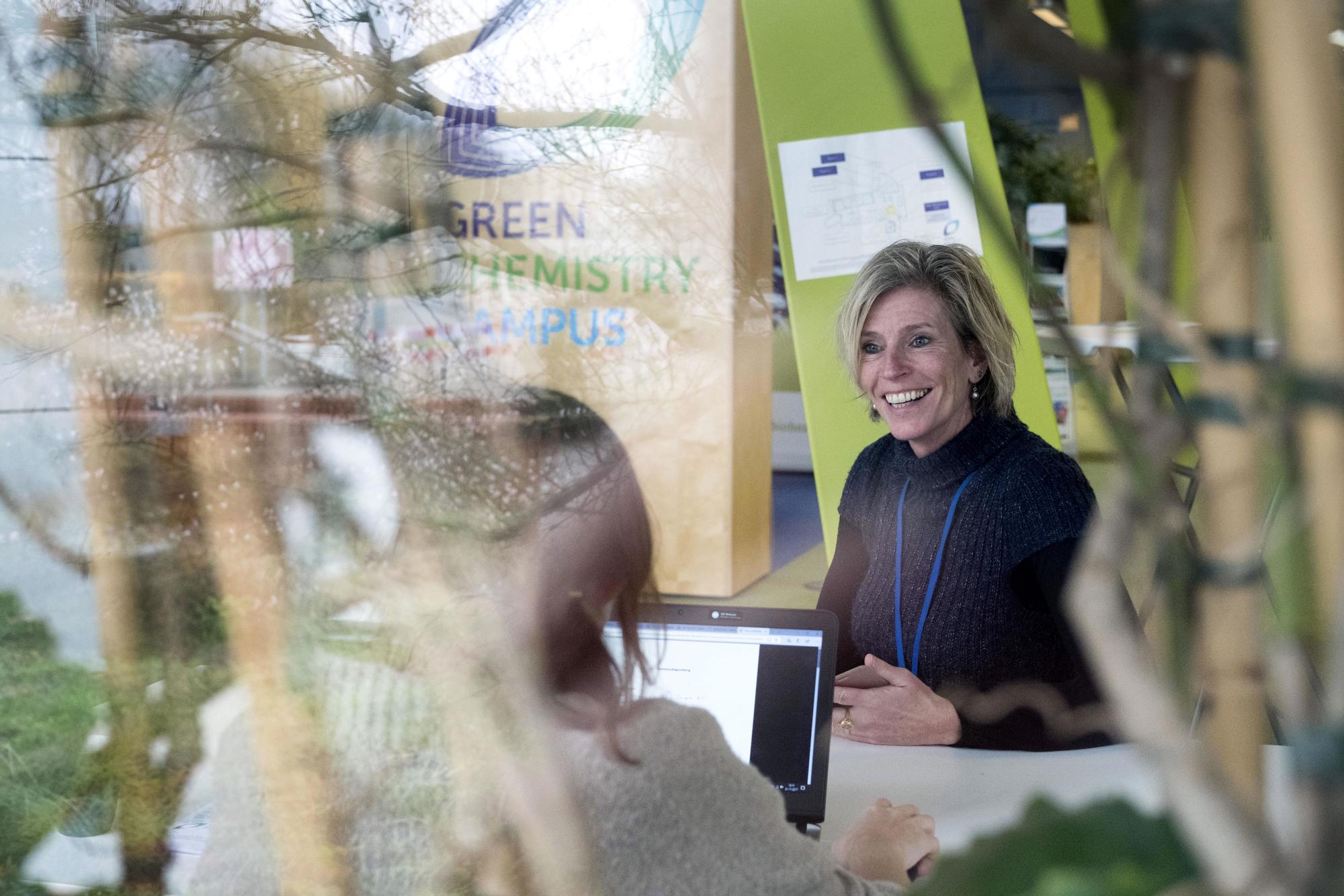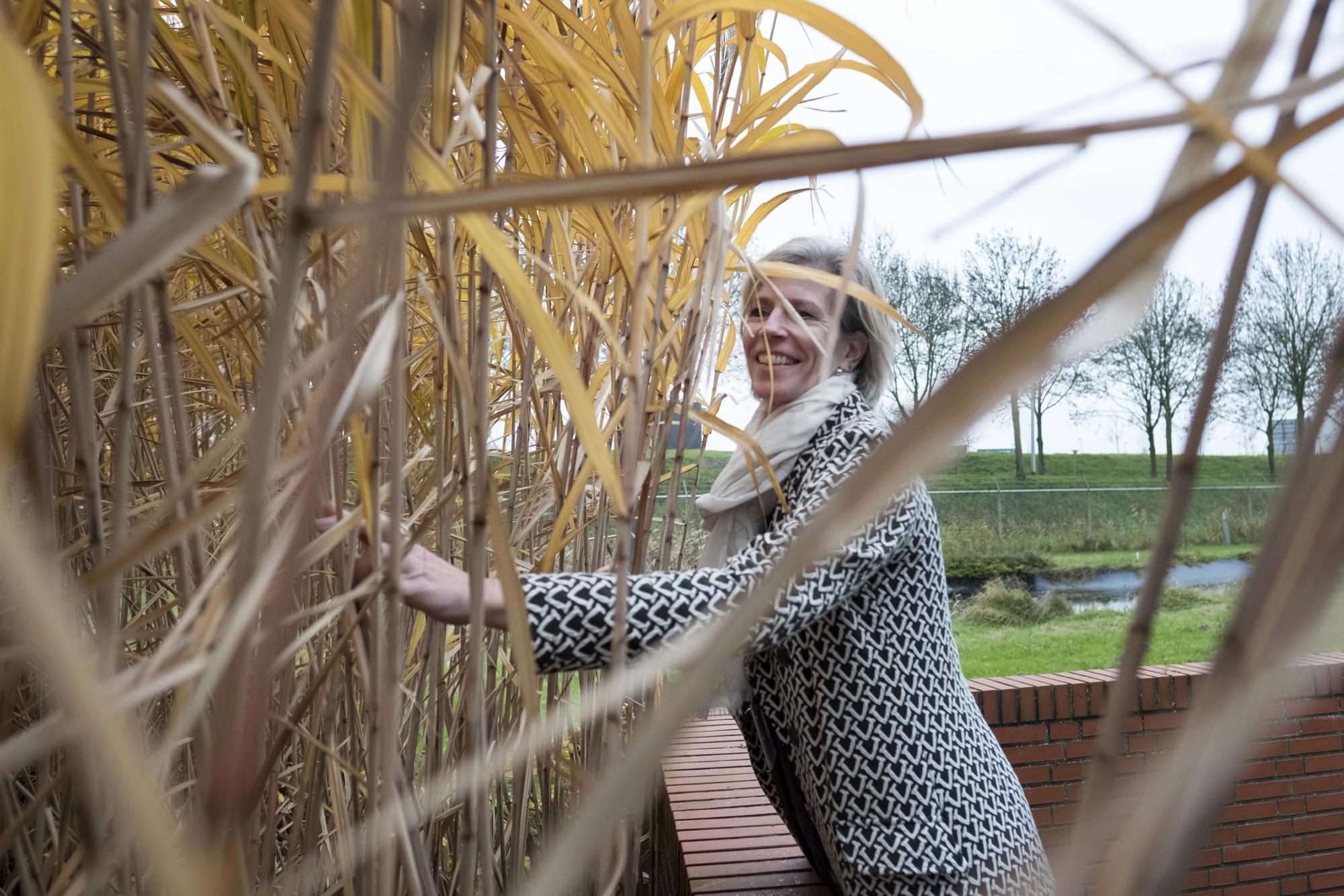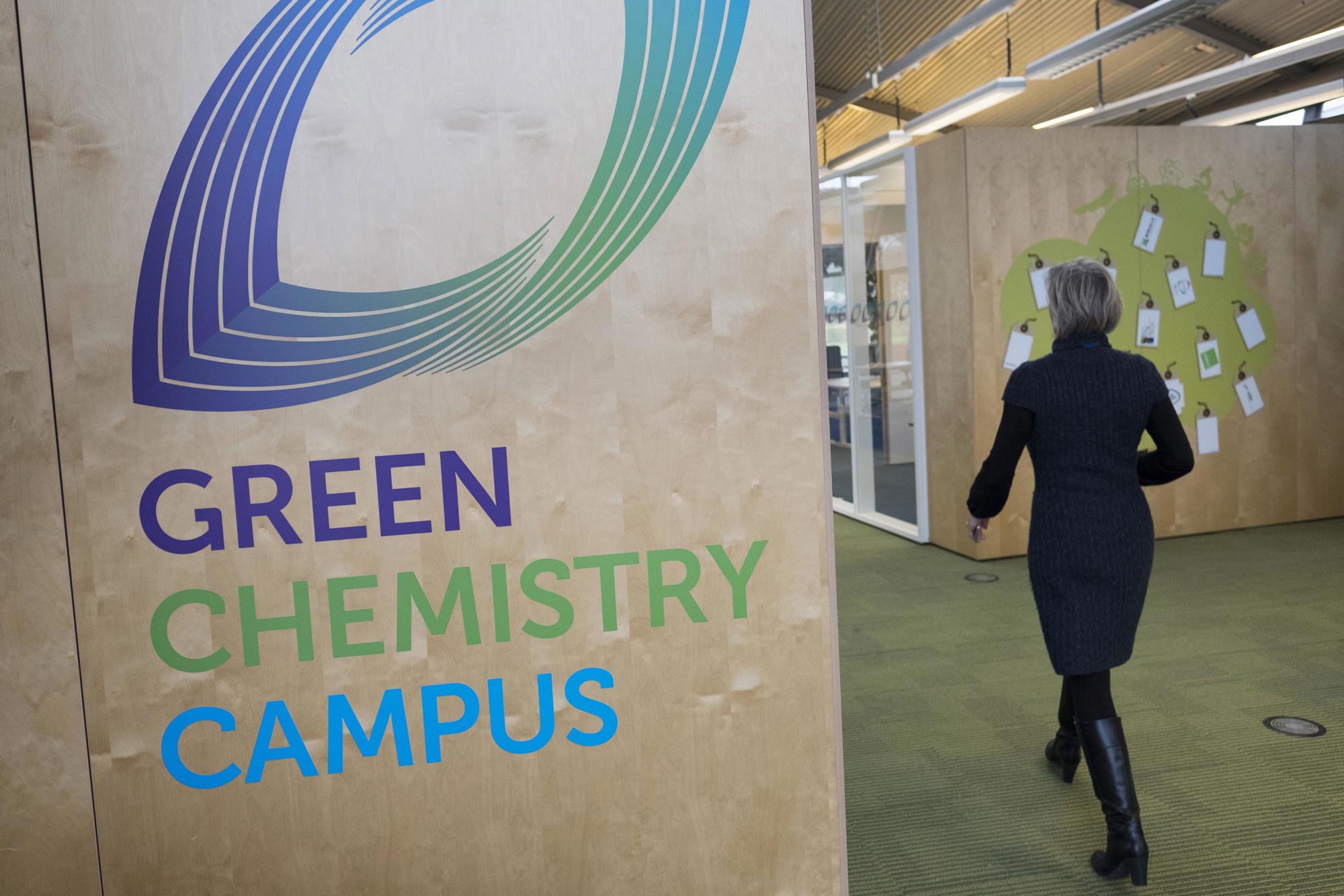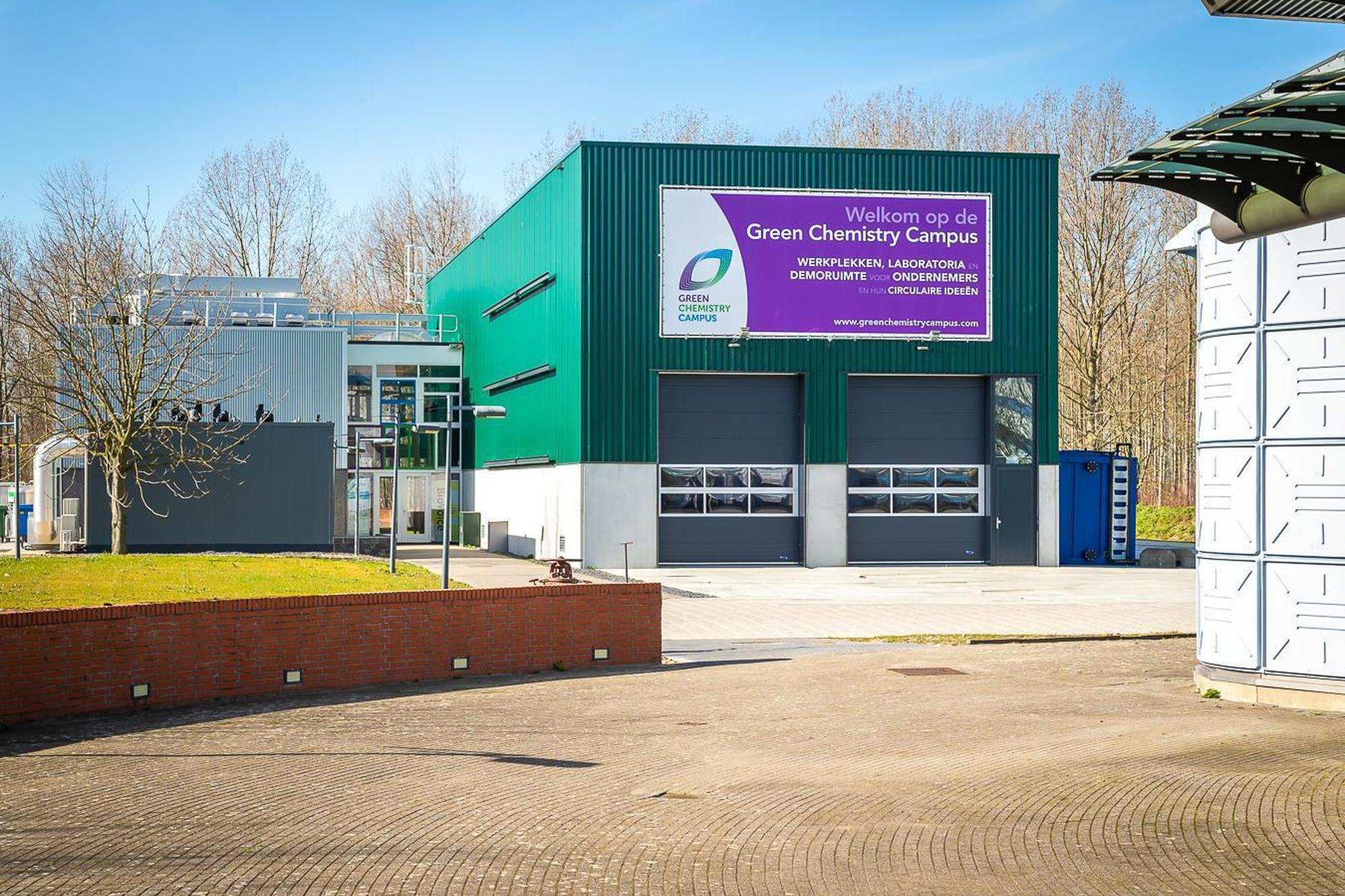The Green Chemistry Campus, the right place for young technology companies, is booming. Read all about the new collaborative partnerships, new investments and the new building.
Petra Koenders laughs as she adopts a pose alongside a thicket of metres-high elephant grass. We are visiting the Green Chemistry Campus (GCC) in Bergen op Zoom and that grass is the raw material for one of the products that the companies at the GCC are developing. Petra has been the director of the Campus since June 2017. “The GCC provides support in the transition to green chemistry and a green economy.”
The companies at the campus are investigating how plant waste and certain crops can be used as a raw material by the chemical industry and producers of packaging materials. Petra: “That research has resulted in some unusual products. Such as candy wrappers made from potato waste, and sustainable ‘green’ concrete.”

Whatever we do, our oil reserves will run out at some stage. So the only option we have is to make the economy sustainable and focus on renewable energy and biomass. At the same time, this ‘bio-based economy’ will help us tackle another major problem: the growing waste mountain. In the Netherlands alone, we produce 59 million tons of household waste each year. Much of that waste is plant-based and a potential raw material for the companies at the GCC.
Petra Koenders: “Biorizon, a Shared Research Centre, is one of the companies at the GCC that converts waste into raw materials. Biorizon conducts research into methods for scaling up the production of bio-aromatics from plant waste and woody biomass in the new demo facility at the Campus. Green chemistry at its best. Global demand for aromatics, which are additives used by the chemical industry, has now reached significant proportions and continues to grow. Aromatics are used in paint, cleaning agents and cosmetics among other products.
Petra: “Aromatics have been extracted from oil until now. Biorizon has plans for a test factory. If their plans succeed, and we are able to produce bio-aromatics from plant waste sourced from agriculture and horticulture, and from cellulose (e.g. the absorbent material in nappies), the ecological environment will benefit in multiple ways. The waste mountain will reduce in size, and CO2 emissions will drop significantly.” Biorizon is a collaboration between TNO, Flemish research agency VITO, ECN part of TNO and the GCC.
Vibers, which grows the elephant grass that dwarfs Petra, is another company at the GCC that has grown tremendously. “They started on a very small scale here. Initially, they developed building materials from elephant grass. Those products were followed by “vibers”, granules that are suitable for producing bio-plastics such as film and packaging materials. The activities at the GCC bring a sustainable future closer to the real economy and create real jobs.”

Petra Koenders believes that the demand for bio-based products must be consumer-driven. If that happens, companies will automatically shift their focus to this area. This is already happening to some extent and SMEs are important players in this field. “As you would expect, most of the companies at the campus are SMEs. To quote one of the initiators of the GCC, Willem Sederel: “The SME sector is the driving force behind the green economy. SMEs innovate and force larger companies to follow suit”. Willem is a former director of SABIC Plastics and a recognised visionary in the area of the bio-based and circular economy.”
The campus did very well during the first few years of its existence, but the period from 2014 to 2016 was difficult. Petra: “The lower price of oil made the need to find other sources of energy less urgent for most industries. Furthermore, the campus, which is located on SABIC's site, was still very much dependent on the latter company. And finally, the economic crisis also held things back.” The future looks much rosier today: the GCC now leases its grounds from SABIC, the new, sustainably built demo facility is almost full, several new experts have joined the team and the number of companies on the Campus has doubled in six months, due in part to the very successful BioVoice programme. BioVoice matches the innovation challenges faced by large companies to the solutions offered by small companies, and subsequently provides support to ensure a successful partnership. The result: 13 innovation contracts and 125,000 euros worth of innovation vouchers. The next round is due to start at the beginning of 2020.

One major advantage of the site in Bergen op Zoom is that many farming businesses - suppliers of biomass - are located in the area. Petra: “The partnership with them is important for the companies at the GCC. To ensure the right properties in their raw materials, they want to be able to have a say in activities like crop cultivation and seed enhancement.” Open innovation and looking for partners are characteristic of the GCC. For example, the campus also wants to collaborate with Cosun, Suiker Unie's agro-industrial cooperative: “To develop even more usable residual waste flows.”
Petra Koenders is convinced that the GCC offers added value for both businesses and the region. “We provide facilities and services for companies that want to scale up their bio-based innovations. For example, we offer rented lab facilities and workspaces. And we also provide support in the area of finance, marketing and business administration. We can even help companies that are based elsewhere in this way. We aim to link companies together to stimulate cross-pollination. And create more jobs in the region.”
There can be no doubt about her personal motivation for working at the Green Chemistry Campus. “I want to contribute to making the world greener and more sustainable. If I am fortunate enough to have grandchildren, I intend to leave behind a healthy planet for them!”

The companies active at the GCC in October 2019 include: Shared Research Center Biorizon, BioTorTech, Centre of Expertise Biobased Economy, Groene Vaert, , Nettenergy, Nimaro Ageno Consult, Vibers, TNO and VITO, Rubia 100% Natural Colours, Impershield, Gova, Gooskens Hout, Dutch Water Tech, Cyber Colloids and Alpha Packaging Europe. The provincial authority of North Brabant, REWIN and the municipality of Bergen op Zoom are the founding partners of the GCC.
You can copy the full text of this story for free at the touch of a button